Sign In to Your Account
Subscribers have complete access to the archive.
Sign In Not a Subscriber?Join NowLOTUS POSITION
Architect Richard Meier tests the Lotus Esprit Turbo
MARK GINSBURG
Cars
Richard Meier nosed the bright-red Lotus Esprit Turbo out of the courtyard of his borrowed multimillion-dollar house on a corner of Greater L.A., part of the seven-hundred-acre site of the forthcoming Getty Museum, which he is in the process of designing. His own car, a new black Jaguar XJ6 sedan, stayed behind, looking rather drab compared with the exotic, wedge-shaped little English sprite. Meier pointed the Lotus down the hill, and we descended, the car all gurgles and bubbles and simmers, interrupting several tennis serves, volleyball games, and soccer matches taking place on neighboring grounds. "It's a little stiff at first," Meier noted, "but it's really solid." We were headed toward Sepulveda Boulevard, where the traffic would be light. At a stop sign a pair of girls in a Corvette gave us the eye, and a woman in a white BMW convertible wanted to know what we were driving. Southern California teenagers in nearby lanes revved their engines as though they were unzipping their flies. Inside the Lotus we were intoxicated by the smell of good English leather, and spellbound by the eerie sensation of being so low to the ground that passing Lincoln Continentals looked like giant sows. The car is low-slung, but surprisingly comfortable. Meier, who is six feet two, said there was a good inch more headroom than in his Jag.
When we reached Sepulveda, Meier started to open up. The Lotus is a fourcylinder car, and its turbo lagged before charging the engine from a standing
start; jackrabbit leaps from stoplights would produce no dividends. Beyond first gear, however, the car flew. Though the engine rests just behind passengers' backs on the other side of the fire wall, the Esprit is so well insulated that we could talk without raising our voices, and the wind played very gently despite the speed and the open roof. The car handled superbly. It's very stable, although we did bob up and down a bit on dips in the road. And it was diplomatic and forgiving, even of a momentary lapse in concentration when Meier skipped a gear as he was pointing out an abysmal upscale housing project called Mountain Gate on an adjacent hillside.
"You really want to go on a trip with this car, just to go driving," Meier remarked. "It's not right for someone who is only going back and forth to work. I bet you could drive for seven or eight hours at a stretch without getting itchy." By this time we were careening through an arch that said "Brentwood." "This is a great car," Meier said. "It's low to the ground, but vyhen you sit in it you feel like you're seeing things at the proper level. The cars going by look much too high. And the quality of the materials—it all feels good, and that's important. The way the padded leather console feels when you put your hand on it—it fits, it's comfortable. I mean, vrooooom!"
H mericans who recognize the name II Lotus very likely do so because of n the smashing little Elan convertible Mrs. Peel (Diana Rigg) drove on The Avengers TV series. But it is a formidable name in Europe, especially on the Grand Prix racing circuit. So when General Motors acquired Lotus in 1986, a collective gasp issued from automotive enthusiasts. What would the giant car manufacturer do to the fiesty English sports-car company? Lotus had struggled for years; its founder, Colin Chapman, was an iconoclast and workaholic. He died of a heart attack at the age of fifty-four. G.M. purchased Lotus not for its cars but for its think tank. Technical innovations were Lotus's bread and butter—ideas to be licensed out for a fee to bigger car manufacturers like Volvo, Toyota, Chrysler, and G.M.
The 1988 Esprit Turbo we drove costs over $62,000 and has a completely redesigned skin over a thirteen-year-old power train. The body is so brilliantly executed that one ignores the matter of vintage hardware. The car is hand-built, and I asked Meier, who deals with craftsmen daily, if the heavy premium that buyers have to pay for the few remaining handmade cars is worth it. "Well, quite frankly, you just don't see this kind of quality on assembly-line work. In the hand-built process, if something doesn't line up, they adjust it. At a big American car company, if it doesn't line up or doesn't meet, they cover it with molding. But I'm not sure that a car should be a hand-built object. It's not necessarily the nature of the machine.
"There should be certain customized features,'' Meier went on, "but not everything needs to be made that way. For instance, to get the top and bottom halves of my Jag interior to match doesn't require handwork particularly. A computer that is programmed and run properly is a marvelous instrument. Automation shouldn't lessen quality; all it should do is improve uniformity—the ability to do it the same every time. If you want a house done in stucco, you can't hold the guy's hand who is tooling the trowel, and his work is certainly going to vary from some other guy's.
Theoretically, if that were done by a properly programmed machine, you'd get the right finish.
"The form of the Esprit Turbo, the aerodynamics of the design, you feel is really worked out without being too zwoopy. I accept the car the way it is, even though I'm not happy with the way the spoiler seems molded onto the rear deck. The back needs work,'' he concluded, adding, "I don't even object to these seams or joints in the plastic, though the door handles really ought to be body color rather than black." The flimsy plastic door handles inside and out are among several nonperformance items that Lotus has cut corners on. The handles are taken from a British economy box; they're ugly and function poorly, which is a pity because the handle is the first thing a driver has physical contact with when he gets into a car.
"The Lotus is clearly a car of incredible quality—but why put all this graphic garbage all over it?" protested Meier. "The logo on the front is poorly designed. And in brass! I mean, what is that about? But otherwise it's an extraor-
MANUFACTURER'S SPECIFICATIONS: Lotus Esprit Turbo • Vehicle type: two-seat, mid-engine coupe with steel chassis. • Price: $62,500 (all-inclusive). • Engine type: four-cylinder, sixteen-valve Lotus 910 (DOHC, turbocharged). • Transmission: five-speed manual. • Acceleration 0-60 m.p.h.: 5.5 seconds. • Projected E.PJV. fuel economy: 17 m.p.g., city; 27 m.p.g., highway.
dinarily beautiful car." The body of the Esprit Turbo is composed of a resin compound (similar to that of the Renault Alpine) rather than steel, and Meier had no reservations about driving a plastic machine: "Somehow it's a plastic age and everything's plastic," he said. "And sometimes it does have a proper application, although when you touch this car it doesn't feel as sturdy or as solid as you know it really is." This fact is borne out in parking lots, where the exotic Lotus or Corvette is much more resistant to nicks and scratches than a less resilient, steelbodied car.
The controls on our Lotus were simple and logically placed and required little familiarization. There were a few design flaws, however. The speedometer was much too small, and the horn button was oddly placed—hiding out at the end of a stalk. The noonday sun caused a glare on the rear window that then bounced into the rearview mirror, impairing vision. The harsh sunlight also pointed up the Grey Poupon/ginger color combo of the interior, which Meier didn't approve of. This was a man, after all, who asked for the chrome on his Jaguar to be blacked out.
Like most English cars, the Lotus has I a history of mediocre service support L systems in the U.S., and dealers are. still scarce. Our car, which was borrowed from a dealer, had a few bugs, including a very embarrassing gear synchro that sometimes made it impossible to get into reverse. It's now up to General Motors, the parent company, to ensure that dealers honor the spirit of the Esprit Turbo's "two-year, unlimitedmileage limited warranty" and train mechanics to fix it properly. The list price of the car is high, and insurance premiums are enormous, but so is the g satisfaction that comes with driving one of the world's most beautiful industrial designs.
CAR COURTESY OF VICTORY LOTUS, BURBANK, CALIFORNIA
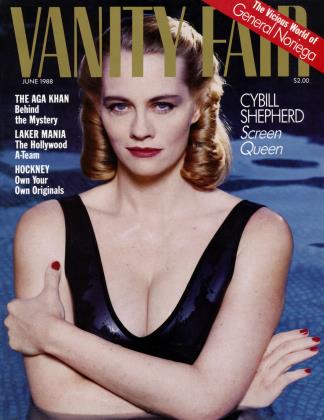 View Full Issue
View Full Issue







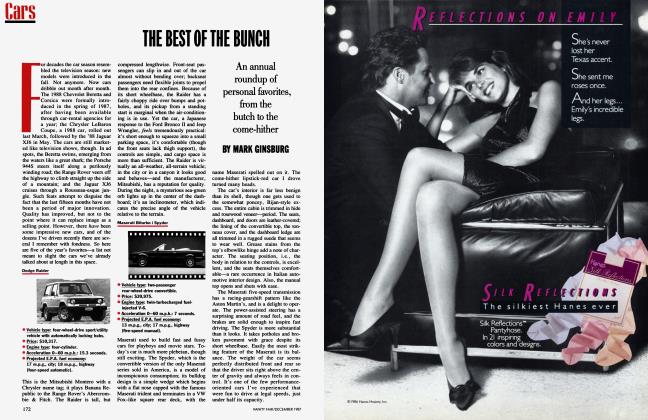



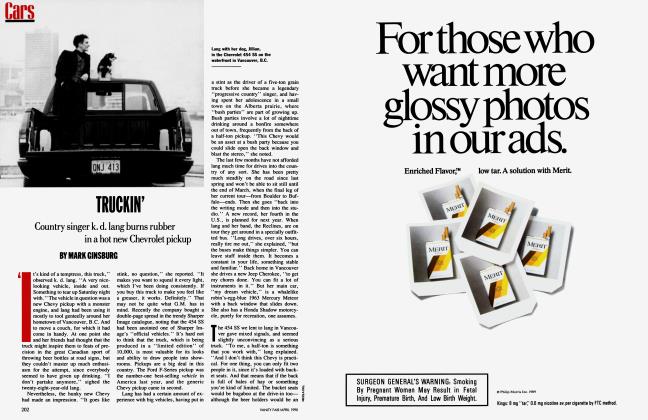



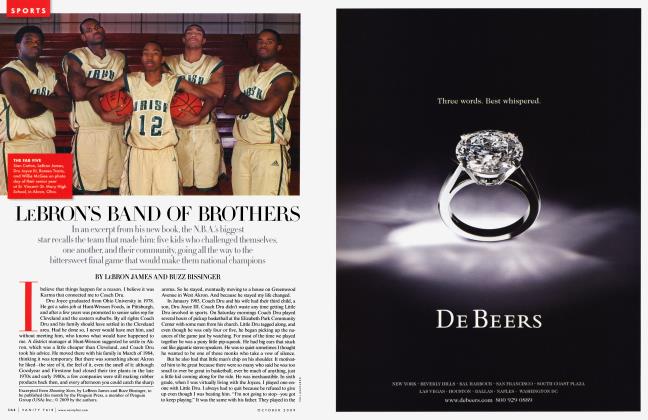
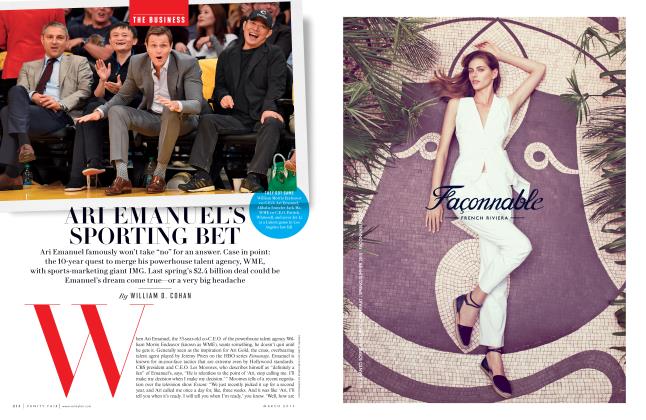

Subscribers have complete access to the archive.
Sign In Not a Subscriber?Join Now